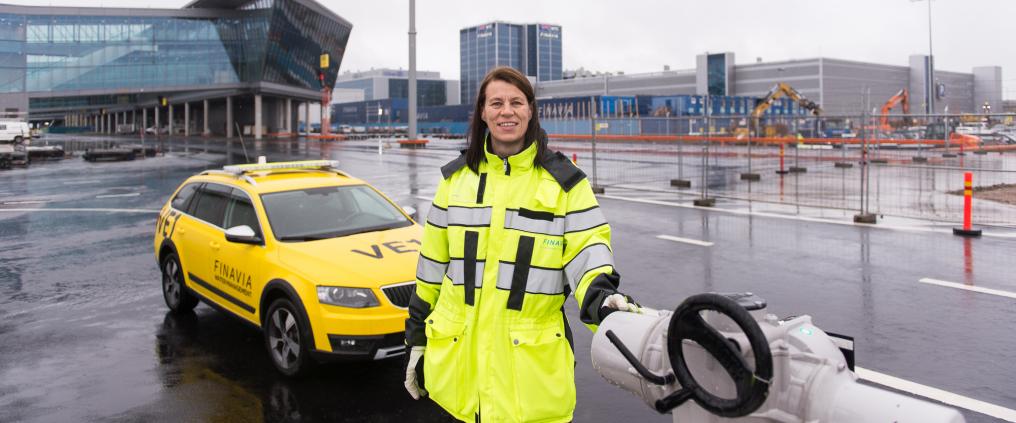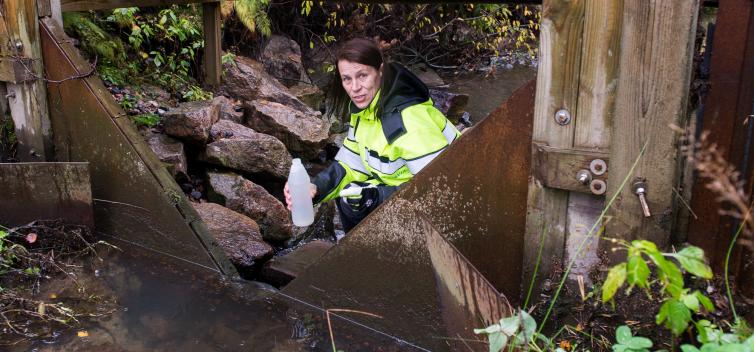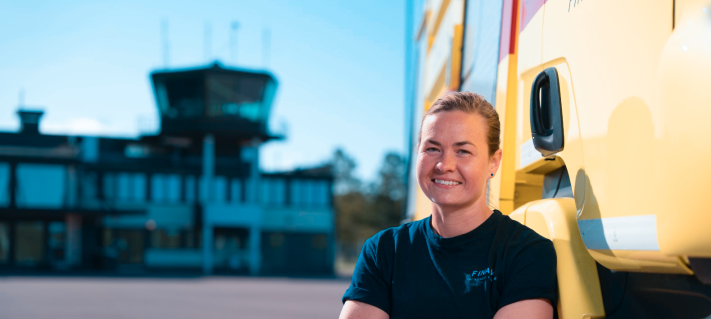Good environmental work is a part of Finavia's corporate responsibility. Our Sum of Good things series highlights details of Finavia's responsibility work.
Elina Kauppila, Finavia’s Head of Water Management, makes her way down to the Kirkonkylänpuro stream and dips an empty bottle in the water, filling it swiftly. Downstream, Kylmäoja meets the Vantaa River, which in turn runs into the Gulf of Finland. The water sample Kauppila collects will be analysed by an external laboratory.
“These water samples are collected routinely, by certified samplers, from ground waters, surface waters and glycol waters, according to a plan approved by environmental officials. If something unusual is found in the analysis, we will take immediate action,” Kauppila says.
Under the tarmac of Helsinki Airport lies a complex system of pumps and measuring points that keeps track and mitigates Finavia’s impacts on local waters. It measures the water running under the airfield with detailed precision. The most common findings in the samples are traces of glycol which is used in aircraft deicing and anti-freezing.
Recovering glycol-contaminated runoffs is a key part of water management at Helsinki Airport. Although glycol itself is relatively harmless, its biodegradation products can accelerate bacterial growth and lead to oxygen depletion in the waters. The degradation of glycol can also produce an unpleasant odour. The effects are greatest in the spring, with melting snow increasing runoffs.
Careful water handling is key
Careful water management at Helsinki Airport is highly important as the airport area has significant groundwater resources and streams. For example, Kylmäoja, which runs to Vantaa River, is an important spawning ground for the local trout population.
”Kylmäoja has significant fish resources. It is the best trout stream in the area. Most of the waters from the airport area run to the direction of Kylmäoja and Veromiehenkylänpuro.”
To protect the streams, Finavia carefully separates contaminated water from clean water and controls runoff waters. Regular rainfall is let into the streams via runoff sewers. Water containing glycol is separated with special hoovers, pumps and sewers, and is treated appropriately.
Water management brought back the trout
Helsinki Airport has collected glycol waters since the 1980s. However, due to the growth of air traffic and de-icing measures, the environmental load on Kylmäoja increased despite long-term attempts to control emissions. An analysis carried out in 2008 showed that the ecological condition of Kylmäoja was quite poor, and the water had an unpleasant odour.
Finavia took action, for instance by introducing new remote de-icing area and expanding the sewer system for de-icing waste waters. The results of a decade’s worth of improved water management work can be seen now: the impacts have decreased significantly, even though air traffic has kept growing.
One clear proof of cleaner waters is the local trout population. With improved water management and maintenance of local streams, the trout – which had virtually disappeared – have once again returned to spawn in Kylmäoja.
Watch a video about Finavia’s corporate responsibility – the Sum of Good things.





